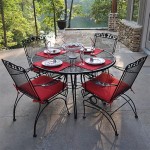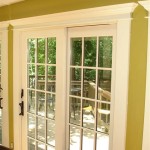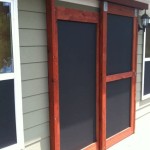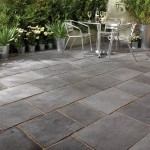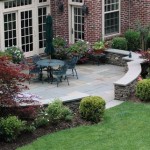How to Cover a Concrete Patio: A Comprehensive Guide
Concrete patios, while durable and initially cost-effective, can sometimes lack visual appeal. They may also become uncomfortable during extreme temperatures or develop cracks and stains over time. Covering a concrete patio offers a practical solution to enhance its aesthetics, functionality, and longevity. This article provides a comprehensive guide to various options for covering a concrete patio, detailing the advantages, disadvantages, and installation considerations for each.
Key Considerations Before Covering a Concrete Patio
Before embarking on a patio covering project, several factors require careful consideration. These factors directly influence the success and longevity of the chosen covering.
Existing Condition of the Concrete: A thorough assessment of the concrete's condition is paramount. Cracks, uneven surfaces, and significant damage must be addressed before applying any covering. Small cracks can often be filled with concrete patch compound, while larger structural issues may necessitate professional repair or even complete replacement of the concrete slab. Failure to address underlying damage will likely lead to problems with the new covering, such as unevenness, cracking, or premature failure.
Drainage: Proper drainage is essential to prevent water from pooling on the patio surface. Standing water can contribute to mold and mildew growth, accelerate deterioration of the concrete and covering materials, and create a safety hazard. Evaluate the existing slope of the patio and ensure it directs water away from the house. If necessary, consider adding drainage solutions, such as French drains or surface grading, before installing the covering.
Local Climate: The local climate plays a significant role in selecting the appropriate covering material. Consider factors such as temperature fluctuations, rainfall, humidity, and sun exposure. Materials that are resistant to fading, cracking, and warping in the local climate are essential for long-term durability. For instance, in regions with harsh winters, choose materials that can withstand freezing and thawing cycles without suffering damage.
Budget: The cost of materials and installation varies widely depending on the type of covering chosen. Establish a realistic budget before beginning the project and research the costs associated with different options. Consider not only the initial cost but also the long-term maintenance expenses. Some materials may require more frequent cleaning, sealing, or repairs than others.
Intended Use and Aesthetics: The intended use of the patio and the desired aesthetic are crucial considerations. A patio used primarily for dining may benefit from a smooth, easily cleaned surface, while a patio designed for relaxation might prioritize comfort and visual appeal. Consider the overall style of the home and choose a covering that complements the existing architecture and landscaping.
Various Options for Covering a Concrete Patio
Numerous materials are available for covering a concrete patio, each with its unique characteristics and suitability for specific applications. The following sections detail some of the most popular options.
Pavers: Pavers are individual paving stones made from concrete, brick, or natural stone. They offer a durable and aesthetically pleasing option for covering a concrete patio. Pavers are available in a wide range of shapes, sizes, colors, and textures, allowing for customizable designs. Typically, a layer of compacted gravel followed by a layer of sand is installed before laying the pavers. The spaces between the pavers are then filled with sand or polymeric sand to provide stability and prevent weed growth.
Advantages of Pavers: Pavers are durable, resistant to cracking, and relatively easy to repair. Damaged pavers can be individually replaced without affecting the entire patio surface. They also offer excellent drainage due to the spaces between the stones.
Disadvantages of Pavers: Installation can be labor-intensive, requiring careful leveling and compaction. Weeds can sometimes grow between the pavers, requiring periodic maintenance. The initial cost of pavers can be higher than some other covering options.
Decking: Constructing a deck over the concrete patio provides a raised platform with a natural wood or composite wood appearance. This option can significantly enhance the aesthetic appeal and comfort of the patio. Decking materials include pressure-treated lumber, cedar, redwood, and composite decking (made from recycled plastic and wood fibers).
Advantages of Decking: Decking offers a comfortable and attractive surface for outdoor living. It can be designed to incorporate features such as built-in seating, railings, and stairs. Composite decking is particularly durable and requires minimal maintenance.
Disadvantages of Decking: Wooden decking requires regular maintenance, including cleaning, staining, and sealing, to prevent rot and insect infestation. Building a deck over a concrete patio can be more complex and expensive than other covering options, often requiring professional installation. Proper ventilation beneath the deck is crucial to prevent moisture buildup and wood decay.
Tile: Outdoor tile offers a durable and stylish option for covering a concrete patio. Porcelain tile is particularly well-suited for outdoor applications due to its resistance to water, frost, and fading. Tile is available in a wide variety of colors, patterns, and textures, allowing for a customized look. Proper installation is crucial to ensure the tile adheres securely to the concrete surface and withstands temperature fluctuations.
Advantages of Tile: Tile is durable, water-resistant, and easy to clean. It offers a smooth and elegant surface for outdoor living. Porcelain tile is particularly resistant to staining and fading.
Disadvantages of Tile: Tile can be slippery when wet, so choosing textured or slip-resistant tiles is important. Installation requires careful preparation of the concrete surface and the use of appropriate adhesives and grout. Tile can be expensive compared to some other covering options.
Epoxy Coatings: Epoxy coatings are a durable and attractive option for refinishing a concrete patio. Epoxy is a two-part system consisting of a resin and a hardener that, when mixed, create a hard, glossy surface. Epoxy coatings are available in a variety of colors and finishes, including decorative flakes and metallic pigments. They are resistant to stains, chemicals, and abrasion, making them suitable for high-traffic areas.
Advantages of Epoxy Coatings: Epoxy coatings are durable, easy to clean, and resistant to stains and chemicals. They can transform a dull concrete patio into a vibrant and attractive space. Epoxy coatings can also be used to hide minor imperfections in the concrete surface.
Disadvantages of Epoxy Coatings: Proper surface preparation is crucial for successful epoxy application. The concrete must be thoroughly cleaned, etched, and dried before applying the epoxy. Epoxy coatings can be slippery when wet, so adding a non-slip additive is recommended. Applying epoxy coatings requires specialized equipment and expertise, so professional installation is often recommended.
Outdoor Carpeting or Rugs: Outdoor carpeting or rugs provide a soft and comfortable surface for a concrete patio. These materials are typically made from synthetic fibers such as polypropylene or nylon, which are resistant to water, fading, and mildew. Outdoor carpets and rugs are available in a variety of colors, patterns, and sizes, allowing for easy customization.
Advantages of Outdoor Carpeting and Rugs: Outdoor carpeting and rugs provide a comfortable and aesthetically pleasing surface for outdoor living. They can help to define specific areas within the patio and add warmth and texture. They are also relatively inexpensive and easy to install.
Disadvantages of Outdoor Carpeting and Rugs: Outdoor carpeting and rugs can trap moisture and debris, leading to mold and mildew growth. They require regular cleaning and may need to be replaced periodically. They are not as durable as other covering options, such as pavers or tile.
Installation Considerations for Covering a Concrete Patio
Proper installation is critical for the success and longevity of any patio covering project. The following are some general considerations that apply to most covering options.
Surface Preparation: Thoroughly clean the concrete surface to remove dirt, debris, oil stains, and any loose material. Pressure washing or scrubbing with a concrete cleaner may be necessary. Repair any cracks or imperfections in the concrete using a concrete patch compound. Ensure the surface is completely dry before proceeding with the installation.
Drainage: Ensure that the patio has adequate drainage to prevent water from pooling on the surface. Verify the existing slope directs water away from the house. If necessary, install drainage solutions such as French drains or surface grading.
Material Selection: Choose materials that are suitable for the local climate and the intended use of the patio. Consider factors such as temperature fluctuations, rainfall, humidity, and sun exposure. Select materials that are durable, water-resistant, and easy to maintain.
Professional Installation: For some covering options, such as decking and tile, professional installation is highly recommended. Experienced contractors have the knowledge, skills, and tools to ensure the project is completed correctly and efficiently. Professional installation can also provide warranty protection.
Maintenance: Implement a regular maintenance schedule to keep the patio covering in good condition. This may include cleaning, sealing, repairing, and replacing damaged materials. Proper maintenance will extend the life of the covering and prevent costly repairs.

Diy Turning A Concrete Slab Into Covered Deck Catz In The Kitchen

Diy Deck Over A Concrete Patio And Tips For Staining Your The Easy Way Love Color Design

Resurfacing A Concrete Patio For Budget Diy Makeover Fab Everyday

Diy Turning A Cement Porch Into Wood Deck Catz In The Kitchen

3 Concrete Resurfacing Options For Patio

Diy Concrete Patio Makeover The Frugal South

9 Great Concrete Patio Ideas For A Makeover Remodelaholic

Inexpensive Ways To Cover A Concrete Patio

3 Inexpensive Ways To Cover Concrete Patio Designs Paint Diy

How To Cover A Concrete Patio With Pavers Diy Family Handyman
Related Posts


